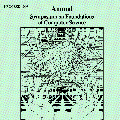Noisy Trapdoor Claw-free functions (NTCF) as powerful post-quantum cryptographic tools can efficiently constrain actions of untrusted quantum devices. Recently, Brakerski et al. at FOCS 2018 showed a remarkable use of NTCF for a classically verifiable proof of quantumness and also derived a protocol for cryptographically certifiable quantum randomness generation. However, the original NTCF used in their work is essentially 2-to-1 one-way function, namely NTCF$^1_2$, which greatly limits the rate of randomness generation. In this work, we attempt to further extend the NTCF$^1_2$ to achieve a $\kappa$-to-1 function with poly-bounded preimage size. Specifically, we focus on a significant extrapolation of NTCF$^1_2$ by drawing on extrapolated dihedral cosets, giving a model of NTCF$^1_{\kappa}$ with $\kappa = poly(n)$. Then, we present an efficient construction of NTCF$^1_{\kappa}$ under the well-known quantum hardness of the Learning with Errors (QLWE) assumption. As a byproduct, our work manifests an interesting connection between the NTCF$^1_2$ (resp. NTCF$^1_{\kappa}$) and the Dihedral Coset States (resp. Extrapolated Dihedral Coset States). Finally, we give a similar interactive protocol for proving quantumness from the NTCF$^1_{\kappa}$.
翻译:2018年的Brakerski等人在FOCS 2018年的FOCS展示了相当的NCF用于典型的可核实量度证明,并得出了可加密可验证量随机生成协议。然而,他们在工作中使用的原NCF基本上是2至1单向功能,即NCF$1 _2美元,这大大限制了随机生成的速度。在这项工作中,我们试图进一步扩展NCF$1_2美元,以达到一个具有多处范围前镜尺寸的美元至1美元功能。具体地说,我们的重点是大幅外加价1美元,方法是利用外加价的离心电离心电联,以1美元至2美元为模式,这大大限制了随机生成的速度。在此工作中,我们试图进一步扩展NCFCF$1_2美元至2美元,以进一步扩展NCFCF1 美元为美元。然后,我们用一个高效的模型来解释我们的CFCF1×1美元至1美元。





